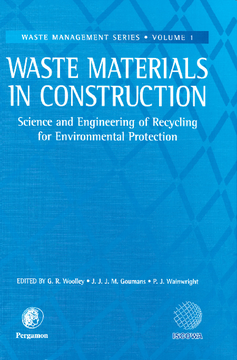
Additional Information
Book Details
Abstract
This volume presents the proceedings of the International Conference on The Science and Engineering of Recycling for Environmental Protection (WASCON 2000), of which a number of themes have been identified. All are inter-related and inter-dependent in so far as potential users of secondary, recovered or recycled material have to be assured that the material is environmentally safe and stable. It is the environmental challenge that forms a leading theme for the conference, and the themes of quality assurance and quality control support this aspect. In terms of use of 'recovered' materials, science and engineering play important and inter-dependent roles and this is reflected in themes which form the very core of the conference. Of no less importance is control of land contamination and how we propose to model for the long term impact of our aims. However dutiful and competent our ideas and studies, there has to be a measure of control and the role of legislation forms the final theme of WASCON 2000.
The breadth of studies being undertaken world-wide and the innovative ideas that are expressed in papers submitted are worthy of this important subject. It is also interesting to note that papers were offered from 30 countries, a sign of the increasing awareness of the need to preserve our natural resources and utilize to the full those with which we are more familiar. This book will contribute to the understanding of and solution of environmental problems concerning the re-use of waste materials in construction.
E. Worrell, Lawrence Berkeley National Laboratory, Berkeley, CA, USA
...The book provides a useful overview of the state-of-the-art of the use of waste materials in construction and will help the scientist and policy-maker to analyse the future needs of the field and to assess global opportunities. This book will contribute to the understanding of environmental problems concerning the re-use of 'waste' materials in construction, and hopefully to a wider acceptance of the use of such materials to reduce the environmental impact in a world that is increasing its resource appetite daily. It will especially help the technical understanding of the characteristics of the 'wastes' and the construction materials. I recommend this book for those readers interested in the state-of-the-art knowledge on resource re-use in the construction industry. Some of the lessons learned presented in a few papers may also provide important lessons for other areas to improve resource efficiency...
Resources, Conservation and Recycling Vol. 33
